RAINY SEASON
Embracing the Rainy Season in Bharat: A Guide to Staying Healthy

As we enjoy the rainy season in Bharat, specifically in Mumbai where the temperature is around 21°C with 84% humidity, it’s a great time to appreciate the beauty and pleasantness of this climate. For many of us in Asian countries, this season is a blessing, as unlike other parts of the world which experience only winter and summer, Bharat is fortunate to have three distinct seasons, including the monsoon.
In Bharat, we often say “JAL HI JIVAN HAI” meaning water is life. The monsoon provides essential drinking water and supports our ecosystem. Without rain, our access to water would be severely impacted. So, we should feel grateful for the rainy season and take full advantage of its benefits.
However, the rainy season also comes with its own set of challenges. It is an ideal environment for bacteria and viruses to thrive, which can lead to various health issues. Therefore, it’s crucial to take proper care and precautions to prevent illness during this time.
Understanding the Impact of Rainy Season on Health
During the rainy season, especially from the beginning of June until early July, the Vata dosha is aggravated. This is particularly significant for those with a Vata prakriti (body constitution). The increased humidity and moisture can lead to digestive problems and aggravate conditions such as osteoarthritis, gout, and rheumatoid arthritis.
Key Considerations for Vata Prakriti:
- Digestive Care: The rainy season is notorious for exacerbating digestive issues. It is essential for those with a Vata prakriti to be mindful of their diet and digestion.
- Prevention of Gastrointestinal Disorders: Problems such as gastritis are common during this season. Ensure you maintain a balanced lifestyle and diet to support your digestion and overall health.
Home Remedies and Precautions
Before seeking medical treatment, consider trying some home remedies. Natural remedies can be effective for minor issues, but if symptoms persist or worsen over a couple of days, it’s crucial to seek medical attention. Here are some tips to help you stay healthy during the rainy season:
- Monitor Your Health: If you notice any symptoms, start with natural remedies and observe if there is any improvement within two days. If not, consult a healthcare professional.
- Avoid Bacterial Infections: The rainy season creates a breeding ground for bacteria. Maintain cleanliness and avoid exposure to contaminated water and food.
- Holistic Approach: Incorporate a balanced diet and lifestyle that aligns with your prakriti. This will help in mitigating the effects of aggravated doshas and support overall well-being.
Boosting Immunity and Managing Dengue During the Rainy Season
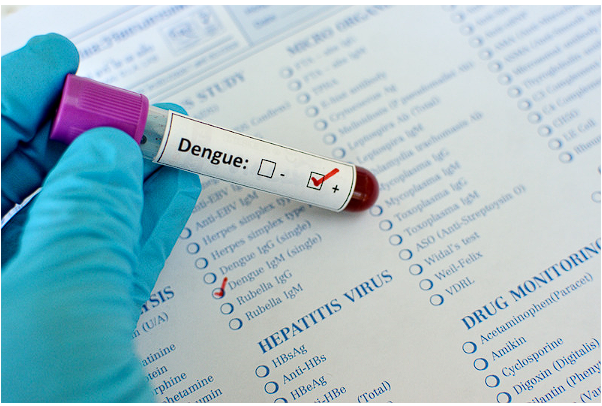
As the rainy season envelops Bharat, especially in places like Mumbai where the weather is humid and favorable for mosquitoes, it’s crucial to focus on boosting immunity. This time of year, characterized by high humidity and abundant bacterial growth, is also the prime period for mosquito-borne diseases such as dengue.
Importance of Immunity
Boosting immunity is essential during the rainy season to fend off infections. The humid climate provides an ideal environment for mosquitoes to spread diseases, making it vital to strengthen your immune system.
Dengue: A Common Concern
Dengue fever is a prevalent problem during the monsoon. Many remember the dengue outbreaks of the 1990s and early 2000s in Bharat, which saw a dramatic rise in cases. Although vaccinations and improved hygiene have reduced the number of cases, dengue remains a significant concern during this season.
Understanding Dengue:
- Transmission: Dengue is spread by female mosquitoes, and the risk is such that out of every four people exposed, one may get affected.
- Symptoms: Common symptoms include high fever, skin rashes, fatigue, nausea, vomiting, and low platelet count. These symptoms can often be identified without immediate blood tests. If symptoms persist or worsen after a couple of days, it is advisable to get tested for dengue.
Managing Dengue: Natural Remedies and Precautions
In the early stages of dengue, managing symptoms with natural remedies can be effective. Here’s how to approach it:
1.Hydration and Rest:
- Liquid Intake: Focus on consuming plenty of fluids. Tender coconut water, which is rich in nutrients, is highly beneficial. Two servings a day can cover more than 70% of your nutritional needs.
- Other Liquids: Consider buttermilk, homemade orange juice (rich in Vitamin C), and papaya leaf juice. The latter, when made by blending one papaya leaf with 100 ml of water, can boost platelet counts and WBC levels.
2.Dietary Adjustments:
- Avoid: Steer clear of deep-fried and spicy foods which can aggravate symptoms.
- Opt For: Mung dal khichdi is a good option for those who need solid food. Prepare it with 80% green mung dal and 20% rice, adding vegetables and ghee for a nutritious, easy-to-digest meal.
3.Pranayama and Deep Breathing:
- Breathing Exercises: Engage in pranayama and deep breathing exercises to improve oxygen levels in the body, which supports overall health and enhances the body’s natural healing power.
- Asanas: If the patient’s condition allows, incorporating Tadasana and Surya Namaskar into their routine can aid in detoxification and regeneration.
4.Herbal Support:
- Gilloy: This herb (Tinospora cordifolia) is effective in treating dengue. Fresh gilloy juice or sticks, when combined with tulsi, papaya leaf, and wheatgrass, can be a powerful remedy. If fresh gilloy is unavailable, use gilloy tablets or powder.
- Tulsi and Wheatgrass: Tulsi leaves, tulsi powder, and wheatgrass in any form (tablet, powder) are beneficial. Alpha alpha powder mixed with honey can also provide necessary stamina and energy.
Understanding Chikungunya: Symptoms, Prevention, and Remedies

Chikungunya is a viral disease transmitted by mosquitoes, particularly prevalent during the rainy season when stagnant water creates ideal breeding grounds for these insects. The key to preventing chikungunya is to avoid mosquito bites, which can be more frequent during this period due to poor sanitation and hygiene conditions. Here’s how you can protect yourself and manage chikungunya if you’re affected.
Preventing Chikungunya
- Avoid Stagnant Water: Stagnant water in pools, potholes, and other outdoor areas can be a breeding ground for mosquitoes. Ensure that water does not collect around your living area and avoid walking in such areas without proper protection.
- Wear Protective Clothing: When walking outside, especially during the rainy season, wear appropriate clothing and footwear to reduce the risk of mosquito bites.
- Limit Outdoor Activity: Minimize unnecessary outings during the rainy season to avoid exposure to mosquitoes. Instead, opt for indoor exercises or activities on a covered terrace. Deep breathing exercises and pranayama can be particularly beneficial during this season.
Symptoms of Chikungunya
Chikungunya can present with several symptoms, which may include:
- Acute joint pain
- Fatigue
- Chills with high fever
- Inflammation of the retina
- Possible involvement of the heart, muscles, and kidneys in severe cases
Joint pain, particularly in the fingers, is a notable symptom. If left untreated, chikungunya can lead to serious complications affecting the heart and kidneys. The inflammation of the retina is also a common issue associated with chikungunya.
Home Remedies for Chikungunya
Traditional remedies can help manage chikungunya symptoms effectively. Here are some remedies from your kitchen that have been shown to be beneficial:
- Ginger and Lemon Tea: Boil two inches of grated ginger in 100 ml of water, strain, and add lemon juice. Ginger’s anti-inflammatory and antibacterial properties, combined with lemon’s vitamin C, can help boost immunity and reduce pain. Drink this tea once or twice a day.
- Home-Cooked Vegetable Soup: Enjoy a well-cooked vegetable soup, adding a pinch of asafoetida, black pepper, and black salt for flavor and health benefits.
- Pomegranate Juice: Fresh pomegranate juice is rich in nutrients and helps with anemia. Squeeze a single pomegranate to extract juice and drink it once or twice a day.
- Moong Pani: This healthy drink can be included in your diet.
- Tulsi Sudha: Tulsi Sudha or green tea can be a good alternative to regular tea. Boil and strain, adding jaggery powder and lemon to taste. Remember, moderation is key; drinking green tea excessively is not advisable.
Diet and Lifestyle Recommendations
- Maintain Digestive Health: Focus on easy-to-digest foods and avoid gluten, which takes longer to digest compared to millets. Include ghee in your diet, as it supports bone and muscle health.
- Exercise and Yoga: If your body allows, practice asanas such as Trikonasana, Chakrasana, and Sukhasana to improve circulation, detoxify the body, and enhance immunity. Properly holding these postures is essential for maximum benefit.
Herbal Remedies and Ayurvedic Medicines
- Herbal Juices: Fresh aloe vera, wheatgrass, punarnava, and giloy juice can be highly effective. Drinking 100 ml of this combination once or twice a day can support recovery.
- Ayurvedic Medicines: Lakshadi Guggul, Kesod Guggul, and Chandraprabha Vati are helpful in managing chikungunya symptoms. These medicines can be used safely across different age groups, from children to the elderly.
Understanding and Managing Malaria: Naturopathic Insights
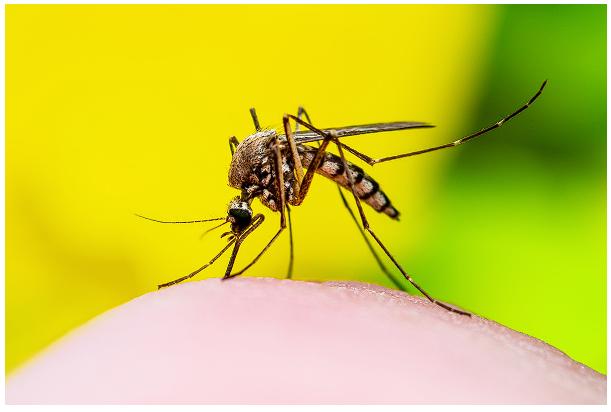
Malaria, a prevalent disease caused by the Plasmodium parasite and transmitted through the bite of an infected Anopheles mosquito, poses significant health risks, particularly during the rainy season when stagnant water serves as a breeding ground for these mosquitoes. While it’s challenging to entirely prevent mosquito breeding due to natural conditions, there are effective ways to protect yourself and manage malaria through both conventional and naturopathic methods.
Prevention Strategies:
- Avoid Mosquito-Breeding Areas: Minimize exposure to areas with stagnant water such as small ponds, holes, and pools. These are ideal breeding grounds for malaria-carrying mosquitoes.
- Reduce Outdoor Activity: Limit unnecessary outdoor activities during the rainy season to decrease the risk of mosquito bites.
Symptoms of Malaria:
- High Fever with Chills: Unlike other fevers, malaria typically presents with high fever accompanied by chills.
- Body Aches and Shivering: Common symptoms include body aches, shivering, and fatigue.
- Excessive Sweating: Fever often alternates with excessive sweating.
- Anemia: In some cases, malaria may lead to anemia.
- Cerebral Malaria and Other Complications: Severe malaria can cause cerebral malaria, convulsions, hypoglycemia, jaundice, respiratory disorders, and, if untreated, renal failure.
Treatment Options:
- Naturopathic Remedies:
- Cold Pack Therapy: To address high fever with chills, apply cold packs to the forehead, chest, or other areas. This helps lower the body’s elevated temperature.
- Whole Body Wrap: Use a wet, cold cotton cloth or shawl to wrap the entire body. Lie down for 20-30 minutes to alleviate chills and normalize body temperature.
- Hydration Mix:Combine 20 grams of rock salt and 40 grams of raw sugar in 100-120 ml of water. Drink this mixture 5-6 times daily to maintain sodium levels and glycemic index, preventing hypoglycemia or hyperglycemia.
- Optional Additions: Add 20 grams of honey, haldi (turmeric), and jeera (cumin) powder to the mixture for enhanced benefits.
- Additional Home Remedies:
- Jaggery Balls: Mix jaggery, jeera powder, and haldi to form small balls. Consume twice a day to help with fever and acidity.
- Sugarcane Juice: Drink fresh sugarcane juice (100 ml) once or twice a day to soothe fever and prevent acid reflux.
- Vegetable Juice: Onion juice mixed with a pinch of black pepper powder, taken twice a day with warm water, provides anti-inflammatory and antibacterial benefits.
- Herbal Remedies:
- Giloy and Tulsi Kadha: Use herbs like Giloy and Tulsi in a concoction for their immune-boosting and fever-reducing properties.
- Sudarshan Ghanvati: Available from Ayurvedic stores, Sudarshan Ghanvati can help manage high fever and shivering. Take two pills twice daily with warm water.
- Giloy Ghanvati: If fresh Giloy is unavailable, use Giloy Ghanvati, taking two tablets twice a day.
Understanding Cholera: Causes, Symptoms, and Treatments
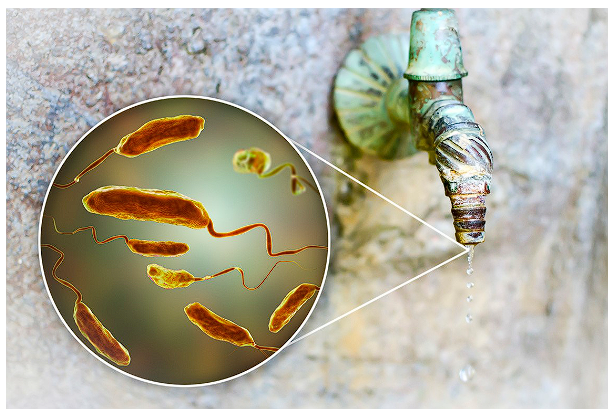
Cholera is a serious illness caused by the consumption of contaminated food and water. Poor hygiene and inadequate sanitation are significant contributors to the spread of this disease. Cholera can be life-threatening if not treated promptly and appropriately. Unlike other diseases like dengue, chikungunya, and malaria—which are primarily spread by mosquitoes—cholera is primarily spread through contaminated food and water.
Causes
The main cause of cholera is the ingestion of food or water contaminated with the bacterium Vibrio cholerae. This contamination often occurs due to poor sanitation and hygiene practices. Although outside food is commonly blamed, inadequate food storage and water treatment at home can also lead to cholera. For instance, leaving food uncovered or not boiling water properly can lead to bacterial contamination.
To prevent cholera, avoid consuming outside food whenever possible, especially during the rainy season. If traveling, opt for bottled or purified water instead of drinking from open sources. At home, ensure that water is boiled before consumption and that food is stored properly.
Symptoms: The symptoms of cholera include:
- Vomiting: Frequent and severe.
- Profuse Watery Diarrhea: This can be extremely watery and can lead to rapid dehydration.
- Excessive Thirst: Despite drinking, individuals may feel persistently thirsty.
- Low Blood Pressure: Due to significant fluid loss.
- Stomach Cramps: Abdominal pain and cramping.
- Rapid Heartbeat: Often a result of dehydration.
- Loss of Skin Elasticity: A sign of severe dehydration.
- Dry Mucous Membranes: Indicative of dehydration.
Treatments:
- Cold Pack Application: Applying a cold pack to the stomach can help alleviate stomach cramps and discomfort. This helps soothe the area affected by diarrhea.
- Mud Application: If available, applying natural mud to the stomach can absorb toxins and help soothe the digestive tract.
- Clove Water: Boil 15-20 cloves in 100ml of water until it reduces by half. Sip this solution regularly to leverage cloves’ antibacterial properties.
- Boiled Water: Always prefer boiled water to avoid contamination.
- Lime Juice: Squeeze a single lime into a glass of water and sip it slowly. Lime juice helps in hydrating the body and is soothing.
- Mint Juice: Fresh mint juice can help combat nausea and vomiting. Simply chop fresh mint, add water, and drink the juice.
- Rice Water: Rice water is effective for treating diarrhea. Soak rice for 2-3 hours, boil it, strain the liquid, and drink it. Adding a pinch of rock salt can improve taste and efficacy.
- Fasting: For severe cases, fasting or sticking to a liquid diet can help the body recover by allowing the digestive system to rest.
Naturopathic Remedies:
- Gokshuradi Vati: Take two tablets twice a day.
- Mahasudarshan Vati: Take two tablets twice a day.
- Avipattikar Churna or Tablets: Take one teaspoon or one tablet twice a day.
These remedies help manage symptoms like fever, acidity, and dehydration, supporting overall recovery.
Typhoid: Understanding Its Risks and Remedies
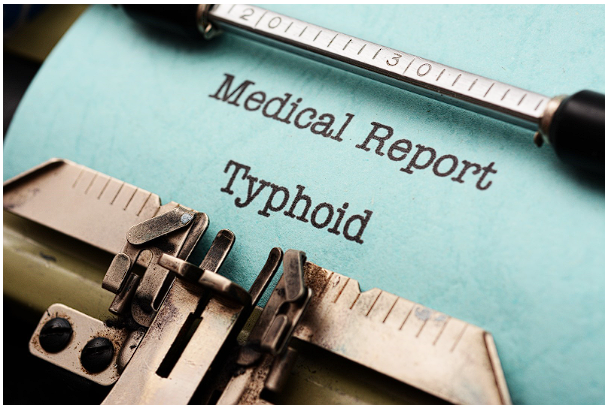
Typhoid is a severe illness, particularly dangerous compared to cholera. During the rainy season, which is prone to contaminated water and food, typhoid becomes a significant health concern. This fever is highly infectious and can lead to serious complications if not addressed promptly.
Symptoms of Typhoid
- Prolonged High Fever: Unlike other fevers where temperatures may fluctuate, typhoid presents a continuous high fever that lasts throughout the day, often for 7-8 hours.
- Weakness: A noticeable decrease in energy and strength.
- Abdominal Pain: Discomfort and pain in the stomach area.
- Reduced Appetite: A significant drop in the desire to eat.
- Vomiting: Occasional vomiting can also be a symptom.
- Liver and Intestinal Impact: Typhoid affects the liver and intestines, leading to inflammation and potentially resulting in conditions like fatty liver post-recovery if not properly managed.
Comparing Typhoid and Other Fevers
Unlike other fevers that might come and go, typhoid’s high fever remains persistent. This fever, combined with weakness, abdominal pain, and loss of appetite, makes typhoid particularly debilitating. The condition requires careful treatment and management to avoid further complications.
Treatment and Management
Typhoid treatment generally involves:
- Medical Attention: Immediate medical care to manage symptoms and prevent complications.
- Post-Treatment Care: Essential for recovery, focusing on liver health due to its crucial role in detoxification and bile secretion. Recovery might take several months, during which diet and health must be closely monitored.
- Naturopathy: Natural remedies can aid recovery, including:
- Deep Breathing and Pranayama: Effective for symptom relief.
- Cold Packs or Mud Application: Apply to the head and stomach for 20 minutes.
- Fruit Consumption: Chikoo, apple, and papaya are recommended due to their fiber content, helping maintain appetite and digestion.
- Moong Pani and Soup: Helps in managing symptoms and staying on a liquid diet.
- Soaked Black Raisins and Figs: Rich in iron and minerals, aiding in nutrient absorption.
- Herbal Remedies: Aloe vera juice, giloy juice, tamarind powder, or supplements like giloy ghanvati and moringa powder can be beneficial.
Prevention and Dietary Recommendations
- Regular Exercise: Engage in 40-60 minutes of exercise or pranayama.
- Fasting and Liquid Diet: During the monsoon, fasting or a liquid diet can support digestion and health. Monsoon fasting traditions, such as having a single meal or liquid foods, align with modern dietary advice.
- Liquid Intake: Ensure regular hydration with beverages like moong pani, vegetable soups, and tender coconut water.
- Avoid Raw Foods: Cook, stir fry, stew, or steam foods instead of consuming raw salads due to hygiene concerns. Fruits are the exception and can be consumed raw.
Vegan and Non-Vegan Diet Adjustments for the Rainy Season: Tips for Staying Healthy
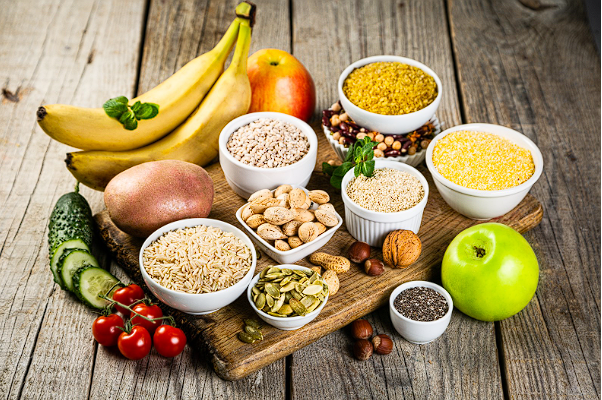
In recent times, veganism has gained popularity, leading to discussions about dietary choices during the rainy season. While traditional buttermilk made from curd is widely consumed, those following a vegan diet might wonder about suitable alternatives. Coconut buttermilk is an excellent choice for vegans and offers a comparable taste to regular buttermilk.
How to Prepare Coconut Buttermilk:
1.Ingredients:
- Fresh coconut (brown pump coconut)
- Raw mango or mango powder
- Lemon
- Cucumber
- Black pepper
- Rock salt
- Freshly chopped mint and coriander leaves.
2.Instructions:
- Remove the pulp from the fresh coconut.
- Grind the coconut with water to make coconut milk.
- Strain the milk and dilute it with water.
- Add raw mango or mango powder, lemon juice, grated cucumber, black pepper, and rock salt to taste.
- Mix well and let it sit for 2-3 hours.
- Add freshly chopped mint and coriander leaves before serving.
Coconut buttermilk is nutritious, easy to digest, and offers a refreshing alternative to traditional buttermilk. It can be enjoyed by both vegans and non-vegans seeking variety in their diet.
Seasonal Fruit Choices
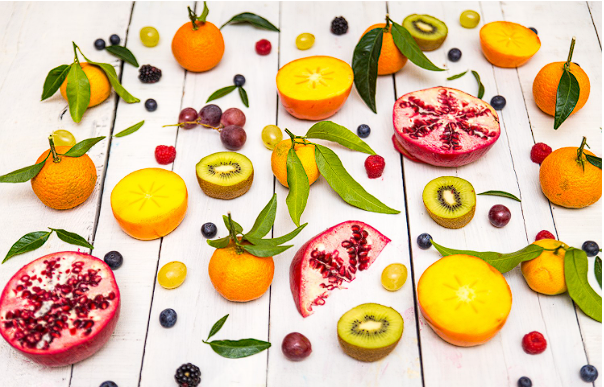
During the rainy season, it’s advisable to consume seasonal and regional fruits. Opt for fruits such as peaches, plums, cherries, and pomegranates. These fruits offer the best nutrients for the season and are preferable over tropical fruits like mangoes and watermelons, which are best avoided as the monsoon begins.
Health Tips for the Rainy Season:
1.Hydration: Despite the humid climate reducing the natural urge to drink water, it’s crucial to stay hydrated. Opt for hot beverages like moongpani, vegetable soup, and tender coconut water to maintain fluid intake.
2.Hygiene:
- Drink boiled water daily to avoid contamination.
- Clean hands before eating and cooking.
- Cover food and drinking water to prevent exposure to contaminants.
- Eat freshly cooked food and avoid leftovers, which can cause gastrointestinal issues.
- Avoid raw salads; instead, opt for cooked, stir-fried, or steamed vegetables.
- If consuming pulses and lentils, soak them for 5-8 hours before cooking to aid digestion.
- Wash fruits and vegetables thoroughly in salt water or hydrogen peroxide solution before consumption.
- Use fresh, regional produce to ensure optimal nutrient intake.
5.Protective Measures:
- Wear shoes and socks to prevent mosquito bites and skin infections.
- Maintain proper hygiene for pets and your home to avoid diseases spread through animals.
- Incorporate seasonal fruits and well-cooked meals into your diet.
- If fasting, consider liquid diets like smoothies made from soaked dried fruits, which are nutrient-dense and easy to digest.
By following these guidelines, you can effectively manage your health during the rainy season. Proper food hygiene, seasonal adjustments, and maintaining hydration are essential for preventing health issues and enjoying a healthy rainy season.








